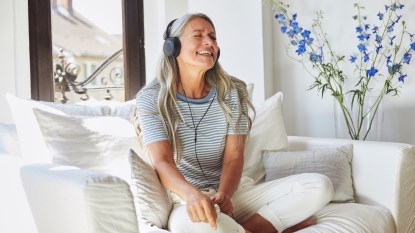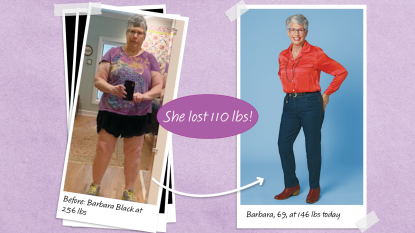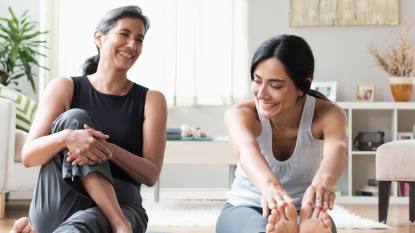The Swedish Secret to Better Sleep, a Healthier Heart and More Joy: Letting Yourself Off The Hook
Are you too hard on yourself? Yes! Here, permission to let more things slide
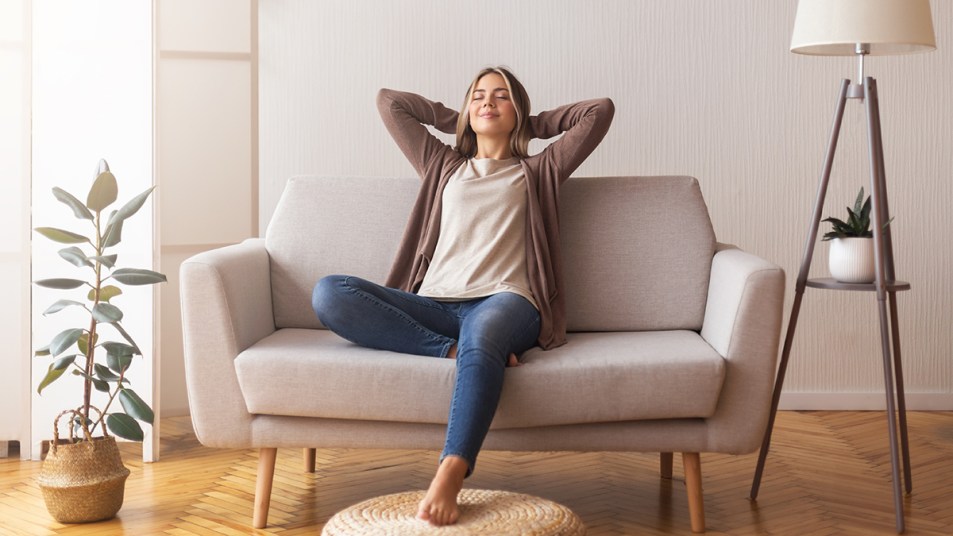
When you think of improving your health, you likely think of what all you need to do. Should you take up jogging? Should you eat healthier foods? Should you sign up for a gym membership. When Swedes think of improving their health, they just as frequently consider what not to do — what to let slide. Maybe you don’t need to answer that email or wash the car or even go to the gym. Read on to discover how the Swedish way of letting yourself off the hook could do wonders to lift your spirits, tame pain, balance your blood sugar, dodge insomnia and more.
What is a lagom lifestyle?
Folks living in Sweden are among the happiest, healthiest people on Earth. One big reason: They follow the lagom lifestyle. Lagom (which is Swedish for “just the right amount”) helps Swedes find balance by not doing too much or too little in all aspects of their lives. For instance, Swedes work hard, but not so much that they miss out on having fun. They spend a lot of time indoors, but also make a point to head out and enjoy nature. And it turns out giving yourself permission to fit in more time for fun, friends and relaxation may be all it takes to send your health and happiness soaring.
1. Enjoying your favorite hobbies lifts your spirits
It’s easy to get lost in a laundry list of daily to-dos, but prioritizing what makes you happy is just as important. That’s why Swedes make sure to carve out time to have fun. “Leisure activities are a very important aspect of everyday life in Sweden,” says Joakim Andersson, founder of SayitinSwedish.com and author of A Lagom Guide to Swedish. “Organizations, clubs, sports, classes, and other regular activities are a big part of Swedes’ social life.”
Related: How to Be a Better Friend + Make New Ones: Experts Share 6 Ways to Boost Your Bonds
Now, scientists from the University of Pennsylvania and UCLA say there’s a great reason for you to allot time for knitting, pickleball, bicycling, and other hobbies every day: Doing so increases your positivity! In their study of 35,375 adults, researchers found that folks who set aside about 2 to 5 hours a day to enjoy favorite pastimes are happier than those who don’t allow themselves as much time for fun.
“Feeling in control, competent, and socially connected are key ingredients for our wellbeing,” says Jenny Woo, PhD, founder and CEO of Mind Brain Emotion. “This explains why we feel stressed and unhappy when we have no time to engage in a leisure activity.” And it also explains why when we make time for our favorite hobbies, our joy soars!

To boost the benefit: When enjoying an indulgent activity (such as watching TV or lingering over a glass of wine), block out thoughts of tasks you “should” be doing instead. Research in the Personality and Social Psychology Bulletin found that folks who can forget about to-dos while treating themselves to short-term pleasures are happier. Giving yourself permission to take a break from responsibilities allows you to fully enjoy it, which gives you greater life satisfaction.
2. Spending time in nature reduces your risk of diabetes
Like many of us, Swedes often spend much of the day indoors working or taking care of household tasks. Despite this, they ensure that they get outside to enjoy nature, too. “Going for long walks or day hikes in the forest are very common activities in Scandinavian countries,” Andersson shares.
You can adopt this Swedish habit by heading outdoors whenever you can — even if it’s something as simple as eating your lunch in a nearby park or watering your garden. Doing so helps you enjoy the beauty of nature. What’s more, regularly being around plants, trees and other greenery reduces your risk of developing type 2 diabetes by up to 25%, according to a study in The International Journal of Environmental Research and Public Health. Green spaces relax you (tamping down inflammation) and give you the opportunity to exercise (reducing weight), which are important ways to ward off the disease.

3. Taking a break dials down body-wide aches
When you have a busy day ahead, it can feel hard to eke out time for a little R&R. But regularly pausing to rest is one of the easiest ways to tamp down aches and pains from head to toe. “Taking breaks throughout the working day is not only very important to Swedes, but also expected of you at your place of work,” notes Andersson.
Researchers from Baylor University advise waiting no longer than 10 am to 11 am to take your first break. Their study shows that a mid-morning rest reduces headaches, eyestrain, lower back pain, and other discomforts for the rest of the day. Whether you read a book, close your eyes for a quick cat nap, or simply kick back on the couch to clear your head, a few minutes of rest is all it takes to outsmart aches.
The reason: The purpose of brief time-outs is to replenish lost mental and physical energy, which reduces pain. So, when you take breaks early in the day before you start to get tired, your overall energy level will be even higher, thwarting aches more effectively.

4. Savoring life’s little joys boosts creativity
In this fast-paced world, it’s easy to find yourself speeding through activities you enjoy, such as a delicious meal. But that go-go-go mindset might be hampering your creativity. “Swedes definitely like to slow down and savor the moment,” says Andersson.
By adopting the lagom lifestyle habit of slowing down and focusing on small delights (like your first bite of pasta or neighborhood flowers in bloom), you’ll enjoy them even more. Plus, there’s a surprising benefit: It makes you better at coming up with innovative ideas. In a study published in the Journal of Baltic Science Education, scientists found that folks who savored the moment were significantly more creative.

Creativity strategist Natalie W. Nixon, PhD, author of The Creativity Leap credits two key aspects of creativity: “Wonder and rigor.” She explains: “Wonder is about dreaming, deep curiosity and audacity. It’s also about the ability to pause. I remind people that it’s really hard to wonder when we’re going 80 miles an hour!” She continues: “Rigor is about focus, time on task and skill mastery. So, both dimensions of creativity—wonder and rigor—require us to be still.” She concludes: “Our creative capacity grows when we pause and are present.”
5. A coffee break with friends safeguards against heart disease
A key part of the lagom lifestyle is fika, which is taking a break from your everyday tasks to catch up with friends over coffee. Follow this Swedish custom yourself and not only will you strengthen bonds with pals, but you’ll also be keeping your heart healthy. A review of 19 studies from the University of York shows that, compared to folks who rarely or never connect with friends, those who regularly spending time with their besties are 29% less likely to develop cardiovascular disease and 32% less likely to have a stroke. Feeling supported and cared for by others tamps down stress, reducing pressure on your heart and arteries.
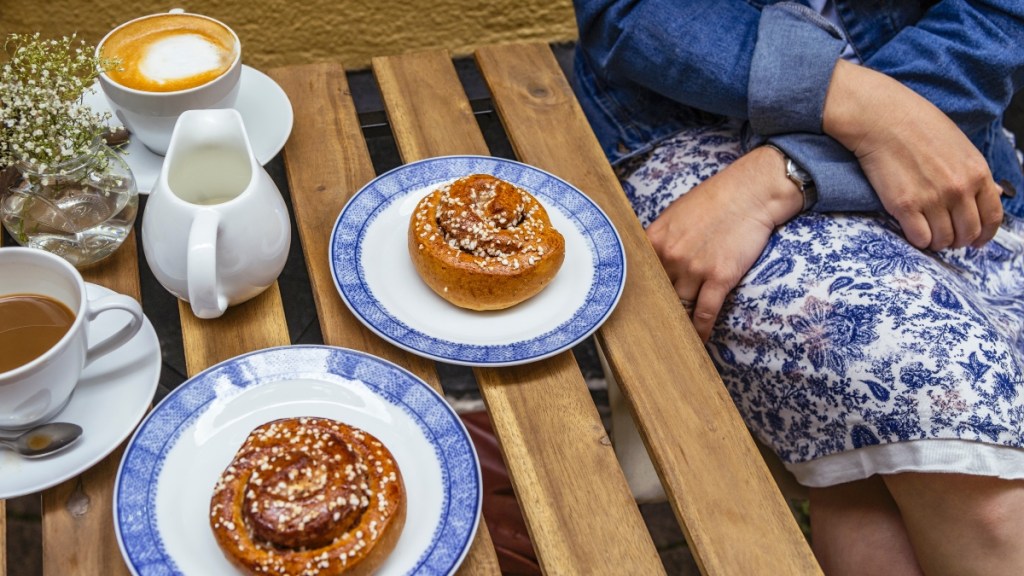
Tip: to boost the benefit of your coffee break with friends, click through to find out the simple brewing trick that reduces your risk of heart trouble.
6. Taking ‘tech breaks’ deepens sleep
We aren’t the only ones who frequently use our smartphone, electronic tablet and computer. “Sweden is one of the most digitized countries in the world,” reveals Andersson. As a result, Swedes are trying to find the right balance in their own lives with technology. “There has been a new sense of awareness in recent years, especially since smartphones tell us how much time we spend on certain apps,” he says. That’s why many Swedes try to take a break from their devices when they can, for example, when out and about or relaxing.
Now, researchers say taking tech breaks is a smart idea if you want better sleep. A study from UC San Francisco found that, compared to frequent phone users, folks who used their smartphone less throughout the day and avoided using them at bedtime fell asleep faster and slept more soundly.
What makes tech breaks so effective: “Excessive tech use impacts sleep because the screens emit a type of light that confuses our body and makes it harder to fall asleep,” says licensed clinical psychologist Shelby Harris, PsyD, Director of Sleep Health at Sleepopolis.com. “This light messes with our internal body clock, throwing off our sleep schedule and making it difficult to feel tired when we should.”
Fortunately, tech breaks can help, says Harris. “You can take short breaks throughout the day, set aside tech-free time in the evenings or even have specific days where you don’t use any technology,” she states. “It’s all about finding a balance that allows you to relax without screens. By taking these breaks, you give your mind and body a chance to rest, reduce exposure to stimulating content, and create healthier sleep habits.” (Click through to see how taking mini tech breaks dramatically improved one woman’s life.)
Read on to discover how making time for little indulgences boosts your health
- 6 Treats That Speed-Heal a Sluggish Thyroid and Boost Metabolism
- 11 Ways to Pamper Yourself to Better Health
- This Indulgent Treat Can Help Ward Off Chronic Diseases and Add Years to Your Life
This content is not a substitute for professional medical advice or diagnosis. Always consult your physician before pursuing any treatment plan.
A version of this article originally appeared in our print magazine, Woman’s World.



